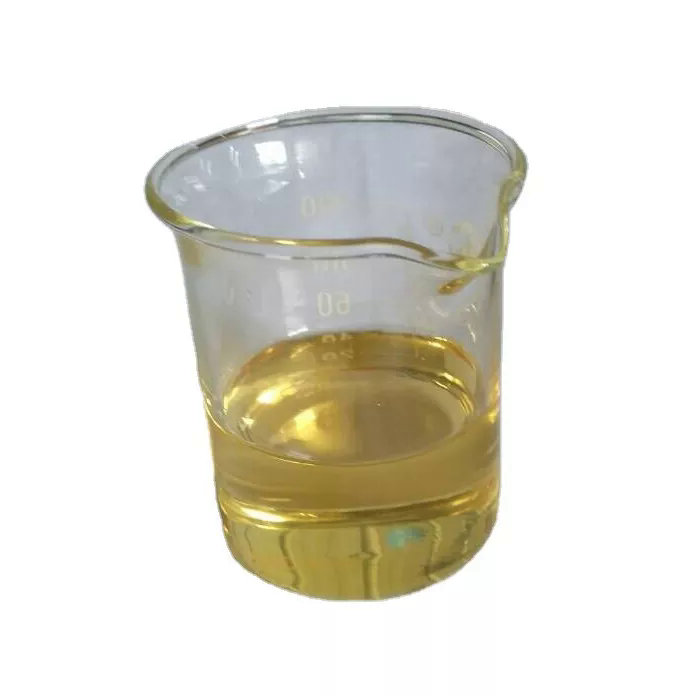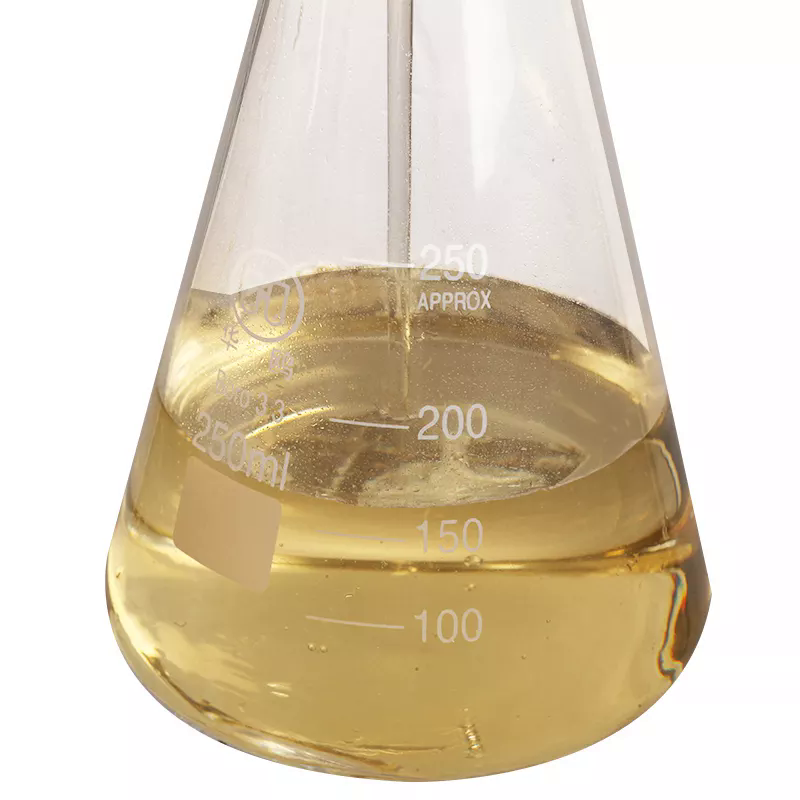Basil oil
Synonym(s):Ocimum basilicum
- CAS NO.:8015-73-4
- Molecular Weight: 0
- MDL number: MFCD00217166
- Update Date: 2024-12-18 14:08:52
What is Basil oil?
Chemical properties
Basil oil, linalool-type (European type; Mediterranean type) is produced mainly in the Mediterranean area (France, Egypt). It is light yellow to amber-colored oil with typical fresh, spicy odor. d2020 0.895–0.920; n20D 1.4750–1.4950; α20D ?2°to ?14°; content by GC: linalool 45–62%; methyl chavicol trace to 30%; eugenol 2–15%. It is used for food flavoring and in perfumery. For additional constituents of these two basil oil types.
Chemical properties
Basil is an annual herbaceous plant native to Asia and other tropical regions; it is cultivated as a culinary herb throughout Europe. The plant is 15 to 45 cm tall with an erect stem, opposite oblique leaves and white or purplish flowers arranged in clusters. The plant flowers from May to September and has an intense, pleasant, characteristic odor. Owing to widespread hybridation, several varieties of plants are known as basil, each yielding on distillation essential oil of different aromatic character. Sweet basil has a warm, intense, spicy aroma with fresh, mint-like flavor; it can have a camphor-like note.
Chemical properties
Basil oil is obtained by steam distillation of the flowering tops or the entire plant of Ocimum basilicum L. It may be distinguished by other types, such as basil oil, Comoros type, or basil oil; Réunion type by its more floral odor and its physicochemical constants.
Physical properties
Depending on the growing site and production conditions, the essential oil obtained by distillation may exhibit completely different organoleptic and physical–chemical characteristics. Well-known types include (1) the Réunion type produced in the Comoros Islands, (2) the Mediterranean type or true sweet basil, (3) the Bulgarian or methylcinnamate types, and (4) the phenolic type from Java. The Réunion and Mediterranean type are discussed under Derivatives. The phenolic type of basil (Ocimum gratissimum) is readily distinguished from true sweet basil by the presence of approximately 60% eugenol and some thymol in the essential oil.
Physical properties
It is a pale-yellow to yellow liquid with a floral, spicy odor. It is soluble in most fixed oils and with turbidity, in mineral oils: 1 mL is soluble in 20 mL of propylene glycol with slight haziness, but it is insoluble in glycerin and mineral oil (FCC, 1996).
Occurrence
Found in the leaves of Ocimum basilicum L.
The Uses of Basil oil
The properties of basil oil (Ocimum basilicum) are noted to include stimulating, tonic, purifying, and anti-microbial. Basil oil’s constituents include methyl chavicol, eucalyptol, linalool, and estragol. It is often used as a carrier oil and for fragrance, and may have some application in acne preparations.
Definition
Extractives and their physically modified derivatives. Ocimum basilicum, Labiatae.
Preparation
By steam distillation of the flowering tops of the plant Ocimum basilicum L.
Essential oil composition
Food Chemicals Codex . European sweet basil oil may contain about 55 % methyl chavicol and 35 % of alcohols calculated as linalool, along with other components
Biochem/physiol Actions
Taste at 10 ppm
Safety Profile
Moderately toxic by ingestion. A sktn and eye irritant. When heated to decomposition it emits acrid smoke and irritating fumes.
Properties of Basil oil
| Boiling point: | 215 °C(lit.) |
| Density | 0.957 g/mL at 25 °C(lit.) |
| refractive index | n |
| FEMA | 2118 | BASIL (OCIMUM BASILICUM L.) |
| Flash point: | 190 °F |
| color | Pale-yellow liquid |
| Odor | floral, spicy odor |
| optical activity | [α]20/D 0.5°, neat |
| EPA Substance Registry System | Oils, basil (8015-73-4) |
Safety information for Basil oil
| Signal word | Warning |
| Pictogram(s) |
 Exclamation Mark Irritant GHS07 |
| GHS Hazard Statements |
H302:Acute toxicity,oral H315:Skin corrosion/irritation H319:Serious eye damage/eye irritation H335:Specific target organ toxicity, single exposure;Respiratory tract irritation |
| Precautionary Statement Codes |
P261:Avoid breathing dust/fume/gas/mist/vapours/spray. P305+P351+P338:IF IN EYES: Rinse cautiously with water for several minutes. Remove contact lenses, if present and easy to do. Continuerinsing. |
Computed Descriptors for Basil oil
Basil oil manufacturer
Expo Essential Oils
Neeru Menthol Pvt Ltd
Samde Aromatic Pvt Ltd
Herbochem Industries
New Products
(S)-3-Aminobutanenitrile hydrochloride 4-Methylphenylacetic acid N-Boc-D-alaninol N-BOC-D/L-ALANINOL Tert-butyl bis(2-chloroethyl)carbamate 3-Morpholino-1-(4-nitrophenyl)-5,6-dihydropyridin- 2(1H)-one Furan-2,5-Dicarboxylic Acid Tropic acid 1-Bromo-3,5-Di-Tert-Butylbenzene S-2-CHLORO PROPIONIC ACID ETHYL ISOCYANOACETATE 2-Bromo-1,3-Bis(Dimethylamino)Trimethinium Hexafluorophosphate 4-IODO BENZOIC ACID 3-NITRO-2-METHYL ANILINE 1-(2,4-DICHLOROPHENYL) ETHANAMINE (2-Hydroxyphenyl)acetonitrile 4-Bromopyrazole 2-(Cyanocyclohexyl)acetic acid 4-methoxy-3,5-dinitropyridine 1-(4-(aminomethyl)benzyl)urea hydrochloride 2-aminopropyl benzoate hydrochloride diethyl 2-(2-((tertbutoxycarbonyl)amino) ethyl)malonate tert-butyl 4- (ureidomethyl)benzylcarbamate Ethyl-2-chloro((4-methoxyphenyl)hydrazono)acetateRelated products of tetrahydrofuran








You may like
-
 Basil oil 99%View Details
Basil oil 99%View Details -
 Basil oil 98%View Details
Basil oil 98%View Details
8015-73-4 -
 Basil oil 8015-73-4 98%View Details
Basil oil 8015-73-4 98%View Details
8015-73-4 -
 Basil oil 8015-73-4 99%View Details
Basil oil 8015-73-4 99%View Details
8015-73-4 -
 8015-73-4 Basil oil 98%View Details
8015-73-4 Basil oil 98%View Details
8015-73-4 -
 Basil oil 98%View Details
Basil oil 98%View Details
8015-73-4 -
 Basil oil, comoric type natural CAS 8015-73-4View Details
Basil oil, comoric type natural CAS 8015-73-4View Details
8015-73-4 -
 8015-73-4 Basil oil 99%View Details
8015-73-4 Basil oil 99%View Details
8015-73-4